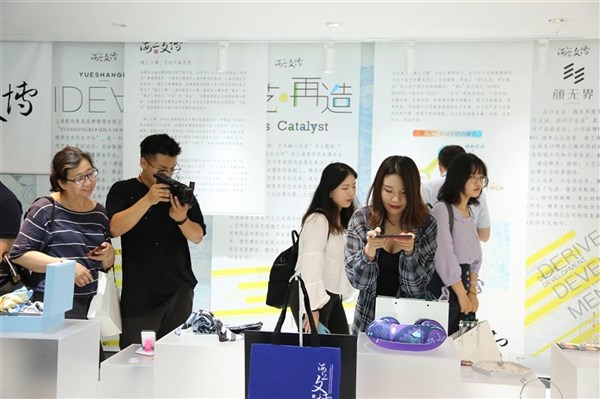今日上海
"海上文博"创意设计大赛成果展亮相 - 2019年08月02日
Turning museum works into everyday products

Treasured exhibits at local museums have been designed into creative merchandize in a design competition to cash in on the rising demand of tourists and locals.
Dozens of products, including pillows, cups, spoons, chopstick, handbags, clothes and jewelry, have been selected as winners at the 2019 Museum and Culture Shanghai Creative Design Contest that wrapped up over the weekend.
Nearly 2,000 designers submitted 1,329 designs during the annual contest launched in March. Over 15 young designers were rewarded for their innovative designs at the closing ceremony at the Liu Haisu Art Museum in Changning District on Friday.
Products developed from cultural relics have become popular souvenirs at domestic museums.
The city's museums had released about 11,000 such products by 2018 with annual sales exceeding 30 million yuan (US$4.4 million) last year.
Half were sold at the Shanghai Museum.
The contest, themed on heritage skills from Jiangnan culture —— the south of the lower reaches of the Yangtze River —— invited designers to transform elements on cultural relics into children's garments, travel souvenirs and household commodities.
For instance, the Da Ke Ding, a bronze tripod bowl dating from the late Western Zhou Dynasty (1046-771 BC) and a significant piece in the Shanghai Museum collection, has been designed into a cup cover.
The ritual vessel, 93.1 centimeters tall and weighing 201.5 kilograms, was discovered in 1890 in an underground vault in Famen Town, in Shaanxi Province's Fufeng County. The tripod bronze vessels were widely used in ancient China for ritual ceremonies and continue to be used as official gifts.
Designer Ren Tianlin incorporated the animal face decoration of the tripod's feet with the rubber cup cover. Another contestant from Shanghai University of Engineering Science printed patterns on the tripod on plates and chopsticks.
A female terra-cotta rider, art of the treasured collection at the Shanghai Museum, has been recreated as a lamp.
Users can assemble the lamp themselves to learn the details and cultures of the piece.
Prehistoric totems feature prominently. The Jade God Figure, a totem dating back to the late Neolithic Age, has been designed into a bottle opener, while the pig totem from the Hemudu Neolithic Site in eastern Zhejiang Province is printed on pillows, aprons and spoons.
Seals of Ba Da Shan Ren (1626-1705), originally named Zhu Da, a leading artist in the early Qing Dynasty (1644-1911), were developed into a portable night lamp. Designer Li Yilin said she was inspired by paintings of Zhu when visiting the Liu Haisu Art Museum.
Many intangible cultural heritages are also involved.
Yang Miaomiao, a young local designer, used Shanghai's Xijiao Farmer's Painting, a listed heritage skill in Xinjing Town in Changning District, to create a ball and stirrer.
"I hope such designs can help promote the traditional painting that has authentic Shanghai style," Yang said.
She spent a month to study classic figures from the paintings and designed them into the products.
Other winning designs include a suitcase, blinder, a facial mask and slippers inspired by shadow puppetry and Peking Opera.
The winning products will be recommended as authorized Shanghai tourism souvenirs, according to the Changning District culture and tourism bureau.
The designs will be certified for copyright and quality.
The annual contest aims to develop cultural and innovative products to bring traditional Chinese culture into the mainstream and people's daily lives, said Tang Wenhua, the Party secretary with the bureau.
